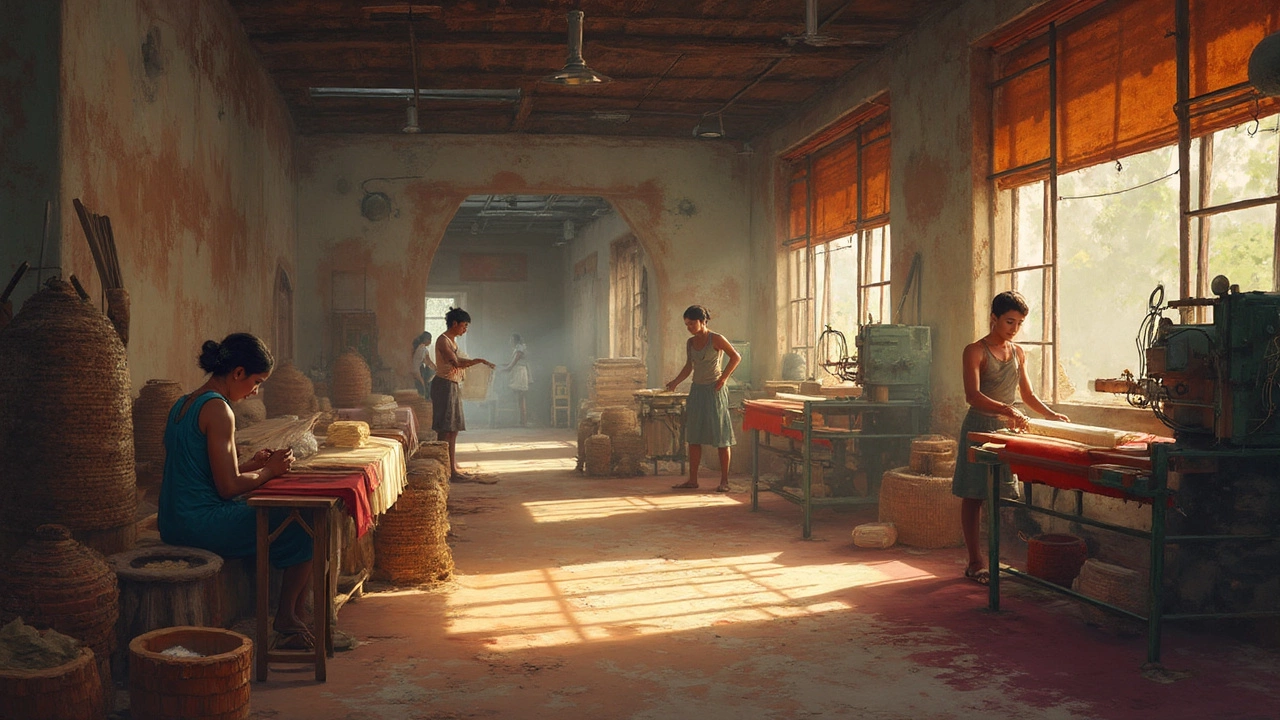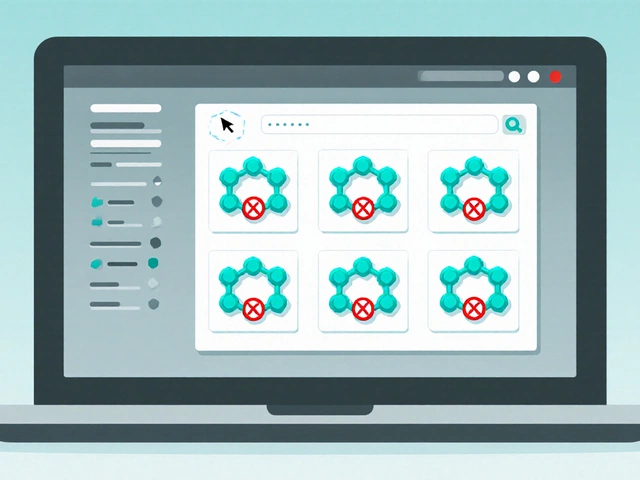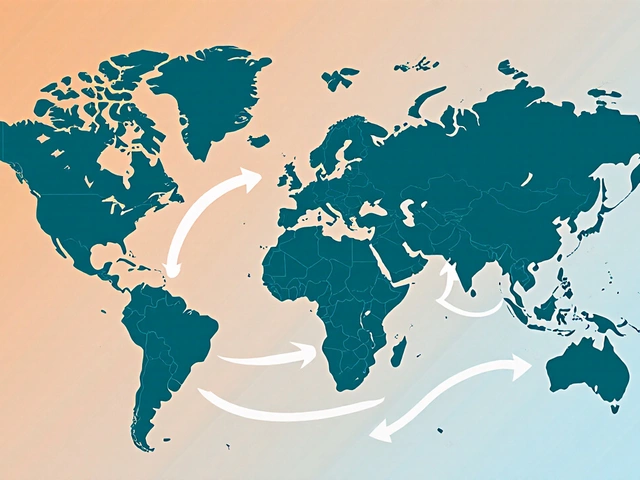Starting a textile business in India can be both exciting and challenging. The textile industry here is vast and varied, offering endless opportunities from traditional handlooms to high-tech garments. But where do you even start? Well, understanding the local market is key. This industry contributes significantly to India's economy, with immense potential for growth and innovation.
The first step is identifying your niche. Are you interested in cotton, silk, synthetic materials, or something else entirely? Each segment has its own trends and demands. It's not just about what you make but how it's perceived. Being aware of customer preferences and upcoming fashion trends can give you a competitive edge.
Once you've nailed down your niche, consider the logistics—setting up production and sourcing materials. You want suppliers with quality raw materials at reasonable prices. Building relationships with vendors can help ensure a steady supply chain, crucial for smooth operations.
- Understanding the Textile Industry in India
- Identifying Your Niche and Market Research
- Setting Up the Business Infrastructure
- Sourcing Raw Materials and Equipment
- Marketing and Growing Your Business
Understanding the Textile Industry in India
The textile industry in India isn't just another sector; it's a powerhouse with deep roots in the country's history and economy. It accounts for a significant chunk of India's GDP and employs millions. But why is it such a big deal? Well, textiles from India are popular worldwide, known for their quality and diversity. Think about the variety—from handloom sarees to advanced nano textiles, there's something to tap into for everyone.
One thing that stands out in the Indian textile scene is its blend of tradition and modern technology. While regions like Varanasi and Kanchipuram are famed for their exquisite silk sarees, cities like Surat and Ludhiana lead the way in modern fabric production. Understanding these specialties can help a budding entrepreneur decide where to focus their efforts.
Key Segments
India's textile industry can be divided into a few key segments:
- Cotton Textiles: A favorite. India is one of the largest producers of cotton, providing ample raw material supply.
- Synthetic Textiles: For those looking at volume and variety, synthetic options like polyester offer possibilities.
- Handlooms and Handicrafts: A niche that celebrates Indian tradition and craftsmanship.
| Segment | Contribution to GDP (%) |
|---|---|
| Cotton Textiles | 5 |
| Synthetic Textiles | 3 |
| Handlooms and Handicrafts | 2 |
Trends to Watch
The industry is shifting its gaze toward sustainability. Consumers are increasingly interested in eco-friendly materials and ethical production practices. Going green isn't just a buzzword; it's gradually becoming an expectation, particularly in urban areas. Another trend is the rise in online shopping. With more people buying clothes online, the textile business is evolving, and entrepreneurs need to adapt by boosting their online presence.
There's no doubt that the Indian textile industry holds vast potential. With the right knowledge and a keen eye on emerging trends, starting a textile business in India can be a very wise move.
Identifying Your Niche and Market Research
Diving into the textile business means understanding where you fit in the grand scheme of things. India’s textile market spans from traditional handcrafted items to mass-produced garments. So, how do you zero in on your niche? It’s all about finding the sweet spot where your interests meet market demand.
Research Market Trends
Start by researching trends. Are eco-friendly fabrics gaining traction? Are there particular regions that favor certain textiles? Staying informed on fashion trends isn’t just for designers—it’s vital for your business too.
Understand Your Competitors
A bit of competition is healthy, but you’ll want to figure out what makes your potential rivals tick. Study what’s working for them and where they might be falling short. This insight helps you carve out a unique position in the market.
Know Your Customers
Who are your customers? Are they young professionals or traditional artisans? Tailoring your offerings to meet their needs can give you a leg up. Conduct surveys or interviews to gather direct feedback—it’s a goldmine for understanding buyer behavior.
Focus on Specialization
Consider whether you want to specialize. Maybe cotton T-shirts are your thing or you want to dive into the silk saree market. Being a specialist can often lead to becoming a go-to producer for those products.
The Indian textile market is vast, estimated to reach $223 billion by 2025. Yet, with many segments still untapped, there's room for newcomers ready to innovate and provide something fresh. Aim to align passion with market potential, and you’ll be on the right path.

Setting Up the Business Infrastructure
Getting your textile business off the ground involves a few crucial steps. A solid business infrastructure ensures smoother operations and can save you headaches in the long run.
Legal Structure and Licensing
First thing's first: picking the right legal structure. You'd typically choose between a sole proprietorship, partnership, or a private limited company. This decision affects taxes, liability, and funding, so it's worth doing your homework. Don't forget about licensing either. You'll need to register your business and get the necessary licenses, such as a GST registration, and comply with the Shops and Establishments Act relevant to your state.
Finding the Right Location
Choosing the right location is paramount for any manufacturing or retail operation. Ideally, you'll want a spot that's easy to access both for supply deliveries and customer access. Keeping proximity to raw material sources or key markets can be a big plus. Space for machinery and inventories is another factor to consider.
Equipping Your Business
Depending on your niche, your textile business might need anything from handlooms to fully automated machines. Investing in the right equipment can optimize your production line, cutting costs, and boosting efficiency. Don't just go for the cheapest option; assess the quality and operational costs first.
Building a Team
A reliable team is the backbone of any business, especially in textiles where skilled labor is essential. Hiring experienced workers can be crucial, but be sure also to invest in training programs to level up your team's skills. Create an environment that values safety and job satisfaction.
| Infrastructure Costs Breakdown | Approximate Cost |
|---|---|
| Location Leasing | INR 1,50,000 per month |
| Machinery Purchase | INR 10,00,000 - 25,00,000 |
| Licensing and Registration | INR 50,000 - 1,00,000 |
Remember, setting up your infrastructure isn't just a one-time task. Keep evaluating and upgrading as your business grows to stay competitive in the buzzing Indian textile market.
Sourcing Raw Materials and Equipment
Getting the right raw materials is like laying the foundation of a house. Without solid basics, nothing else matters. First off, decide on the types of materials you want for your textile business. Are you leaning towards natural fibers like cotton or silk, or are you planning to delve into synthetics like polyester or nylon?
Now, where do you find these materials? India is rich in resources. For cotton, Gujarat and Maharashtra are your go-to states, whereas silk is plentiful from Karnataka and Tamil Nadu. For synthetic options, the cities in Gujarat and West Bengal are worth considering.
Building Vendor Relationships
Getting quality supplies at a fair price requires strong vendor relationships. It’s often a good idea to visit supplier operations personally, which builds trust and lets you assess quality directly. And hey, attending local textile fairs can connect you with multiple vendors, offering insights and comparisons under one roof.
Essential Equipment
When it comes to equipment, think smart and efficient. Before splurging, list what you need. Essential machinery might include looms, sewing machines, and dyeing equipment. If sustainability is your selling point, consider newer technologies that consume less energy and resources.
Investing in second-hand machinery can sometimes be cost-effective, but let’s be honest, it’s a gamble. While they can be cheaper upfront, ongoing maintenance could cost you more in the long run.
Crunching the Numbers
A clear budget will guide your choices. Here’s a nifty breakdown for initial costs you might face:
| Cost Component | Estimated Range (INR) |
|---|---|
| Raw Materials (Per Kg) | 50 - 150 |
| Loom Equipment | 1,50,000 - 3,00,000 |
| Standard Sewing Machine | 20,000 - 1,00,000 |
Remember, every penny saved is a penny earned. Bargain, negotiate, and always stay on top of your expenses. Keep in mind that the textile business in India thrives on both tradition and innovation, so find that sweet spot where quality meets cost.

Marketing and Growing Your Business
Alright, you've set up your textile business. Now, let's talk about getting your products in front of customers. Marketing isn't just about selling—it’s about creating a brand that people trust and love. To achieve this in the textile business, having a strong and appealing brand identity is crucial.
Building an Online Presence
In today's world, if you're not online, you might as well not exist. Setting up a website and leveraging social media platforms can significantly boost your visibility. Instagram, known for its visual appeal, is especially great for the textile industry. Showcase your latest designs, share behind-the-scenes content, and engage with your audience to build a community around your brand.
- Website: Make sure it’s mobile-friendly and has an easy-to-navigate e-commerce section.
- Social Media: Use platforms like Instagram, Facebook, and Pinterest. They offer targeted ads, which can be useful for reaching potential customers.
Collaborations and Networking
Collaborate with influencers and fashion designers who resonate with your brand. Attend textile and fashion shows to network and find partners. Sometimes, a simple shout-out or collaboration post can draw significant attention to your textile business.
Customer Engagement and Feedback
Once you start gaining customers, engaging with them is vital. Encourage feedback and use it to enhance your products. A customer-oriented approach often leads to repeat business and word-of-mouth marketing, which is free and effective!
Monitor Your Growth
Keep an eye on your growth metrics. Use analytics tools to understand what's working and what isn’t. Adjust your strategies based on data to ensure your efforts are giving you the best ROI.
| Marketing Channel | Average ROI |
|---|---|
| Social Media | 12% |
| Email Marketing | 8% |
| Influencer Collaborations | 15% |
In the evolving world of textile manufacturers, staying adaptable and open to new trends can significantly help in not just surviving, but thriving. Keep updating your strategies and never stop innovating!











Write a comment